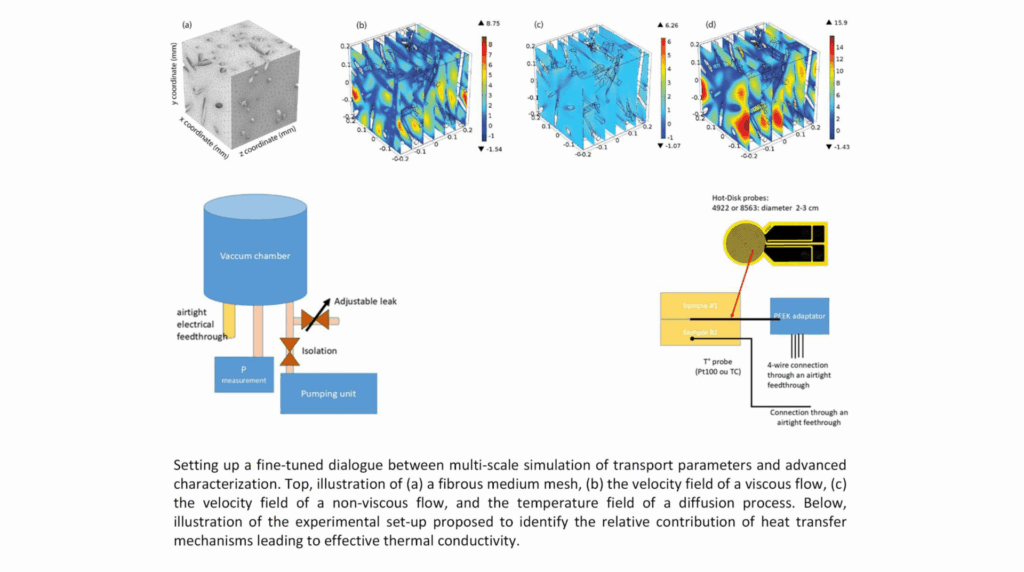Heat Transfer ID
Instrumentation device for the identification and characterization of heat transfer modes in bio-based and recycled-based insulating materials
Porous media play a crucial role in cities and regions, as they are among the primary sources of materials used for thermal and acoustic insulation (energy savings, weight reduction, noise reduction). However, their development is essentially based on fragmented approaches, depending on the material or application. For instance, thermal properties are often examined independently of acoustic properties, and vice versa.
One of the major challenges of this project is to propose a multi-scale, multi-disciplinary materials approach for predicting the thermal and acoustic properties of porous media, based on a detailed description of their microstructures. The aim is to adopt an eco-design approach, using a substantial proportion of recycled, recyclable or bio-sourced materials to contribute to a circular economy.
Significant progress has been made over the last ten years in multi-scale modeling of the transport properties of random fibrous media (see figure below). This progress relies on a methodology built around: (i) advanced imaging techniques to provide model input data; (ii) a numerical homogenization approach to understand and predict the macroscopic behavior of the material; and (iii) fine experimental methods, without which precise validation of the entire multi-scale approach is not possible.
Despite these advances, a precise experimental estimate of the relative contributions of each heat transfer mode involved in the effective conductivity of fibrous media—namely conduction, convection, and radiation—remains to be performed as a function of their porosity. This project aims to develop an experimental setup capable of characterizing these contributions accurately and enabling further refinement of multi-scale models.


